151. Returning now to the niu type of glyph. The beginning of the C
text was clearly coordinated with 0h at the time of
rongorongo, at which time the Cosmic World Tree
(Milky Way) would have turned around so
that the Branch of Mimosa (rau hei) in the
Southern Cross now was *192 days after 0h (rising
with the Sun in day 272 = 2 * 136), whereas at the time of
Betelgeuze it would have been there in day 272 - 88
= 184 (= 80 + *104 = 6 * 29½ + 7).
... At the time of Betelgeuze (when
this star had been at 0h) Acrux (†) would have risen
with the Sun *88 (= the right ascension position of
Betelgeuze at the time of rongorongo) days earlier
in the year than at the time of rongorongo.
September 24 (267, heliacal Acrux) - 88 = 179 (= 80
+ 99 = 84 + 95), and this was a week after the
solstice when the Sun 'died', † ...
... Beyond a solstice life (Sun light) would return
again and notably Mimosa (β Crucis) was there (5 days after Acrux) as a reminder ...
 |
|
rau hei |

 |
 |
 |
 |
 |
 |
|
Gb1-20 |
Gb1-21 (250) |
Gb1-22 |
Gb1-23 |
Gb1-24 |
Gb1-25 |
|
μ², μ¹ Oct. (313.2),
DENEB
CYGNI = α Cygni
(313.5), β Pavonis (313.6),
δ Delphini (313.8) |
Al Sa’d al Bula'-21 /
Dhanishta-24 /
Girl-10 (Bat)
YUE
(Battle-Axe) = ψ Capricorni
(314.3),
GIENAH CYGNI = ε Cygni,
η Cephei (314.5),
γ Delphini
(314.6), σ Pavonis (314.7),
ALBALI = ε Aquarii
(314.8)
BETELGEUZE (α Orionis)
|
BATEN ALGIEDI
= ω Capricorni
(315.8) |
μ Aquarii
(316.0) |
ε Equulei (317.8) |
no star listed (318) |
|
Jan 28 |
29 (*314) |
30 |
31 |
Febr 1 (32) |
2 (398 = 33 + 365) |
|
°Jan 24 |
25
(*310) |
26 |
27 |
28 (393) |
29
(*314) |
|
'Jan 1 |
2 |
3 (*288) |
4 |
5 (370) |
6 |
|
"Dec 18 |
19 (*273) |
20 (354) |
SOLSTICE |
22 |
23 |
|
NOV 25
(329) |
26 |
27 |
28 |
29 |
30 (*254) |
|
309 = 329 - 20 |
310 |
311 |
312 |
313 |
314 (π) |
|
... Rau
hei.
1. Branch of mimosa. 2. Killed enemy. 3.
Hanged 'fish'. 'Branche
du mimosa (signe de mort), ennemie túe
(poisson suspendu)' according to
Jaussen ... |
 |
At the time of Bharani the "December
solstice would have arrived after the Sun
had reached the Belly of the Goat (Baten
Algiedi) - notably at the right bent foreleg
of the resting Goat - which fact might have motivated the
rau hei (†) glyphs in the G text above.
311
(Baten Algiedi) - 184 (Mimosa at the time of
Betelgeuze) = 127 (= 364 - 237).
Above the watery tail of the 'Goatfish' was
the dry towel of Aquarius (corresponding to
the Hot Air Ballon of the French Republic):
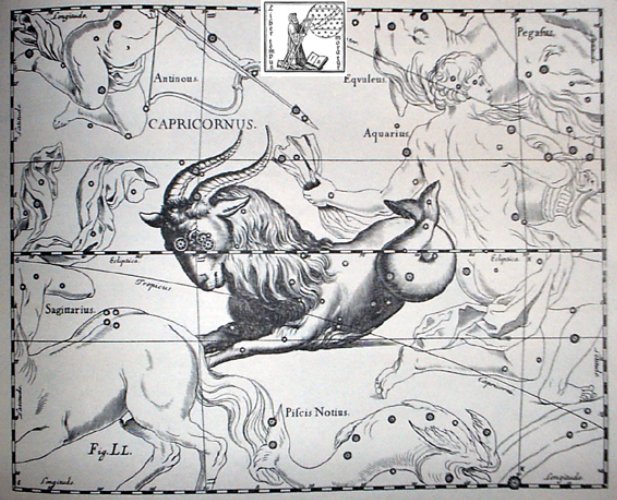
|
no glyph |
 |
 |
 |
 |
 |
 |
|
Ca1-1 |
Ca1-2 |
Ca1-3 |
Ca1-4 |
Ca1-5 |
Ca1-6 |
|
koia |
ki te hoea |
ki te henua |
te rima te hau tea |
haga i te mea ke |
ki te henua - tagata honui |
|
INVISIBLY CLOSE TO THE SUN
(helical dates): |
|
ºSept 16 |
17 (260) |
18 |
19 |
20 (*183) |
21 (264) |
EQUINOX |
|
*179 = *183 - 4 |
*180 |
*181 |
*182 |
*183 |
*184 = 264 - 80 |
*185 = *2 + 183 |
|
ALCHITA
= α Corvi,
MINKAR (Beak)
= ε Corvi |
PÁLIDA (Pale)
= δ Crucis |
Hasta-13
(Hand or Fist) /
Chariot-28 (Worm)
GIENAH
(Wing) = γ Corvi,
ζ Crucis |
CHANG SHA (Long Sand-bank)
= ζ Corvi |
INTROMETIDA
= ε Crucis,
ACRUX
= α Crucis |
ALGORAB
= δ Corvi,
GACRUX
= γ Crucis |
AVIS
SATYRA
= η Corvi,
KRAZ
= β Corvi |
|
Sept 20 (*183)
'Aug 24 |
(264 = 237 + 27)
(237 = 242 - 5) |
EQUINOX
26 |
23 (266)
27 |
24
28 (240) |
25 (*5 + 183)
29 |
(59 + 183 + 27)
30 (242 = 11 * 22) |
|
"Aug 10 |
11 |
12 |
13 |
14 |
15 (227→ π) |
16 |
|
JULY 18 |
19 (264 - 64) |
20 |
21 |
22 / 7 (π) |
23 |
24 (*125) |
|
179 = 183 - 4 |
180 = 260 - 80 |
181 |
182 |
183 = 203 - 20 |
184 |
185 = 2 + 183 |
|
175 |
176 |
177 = *185 - 8 |
178 |
179 |
180 |
181 = 364 - 183 |
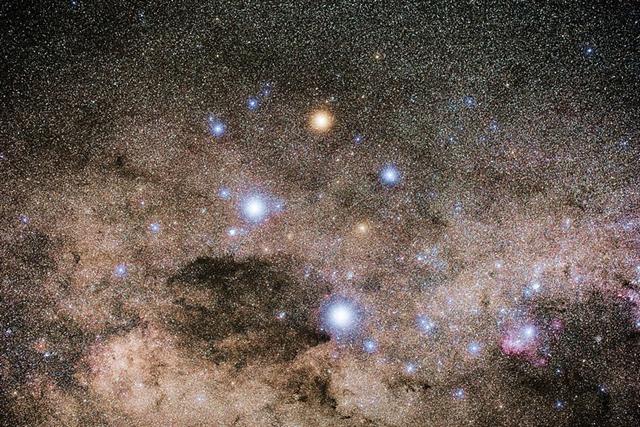
... There was no water in
the village. The lakes and
rivers were dry. Raven and
Crow, two young girls who
were having their first
menstrual courses, were told
to go and draw water from
the ocean. Finding the
journey too long, Raven
decided just to urinate into
her basket-bucket. She
decieved no one and was
severly scolded. Crow
returned much later but with
drinking water. As a
punishment, Raven was
condemned never to find
water in the summer; only in
winter would she find
something to drink. For that
reason the Raven never
drinks during the hot
months; she speaks with a
raucous voice because of her
dry throat ... |
|
CLOSE TO THE FULL MOON (and
nakshatra dates): |
|
ºMarch 17 |
18 (77) |
19 |
20 (*365) |
21 (0h) |
22 |
23 |
|
*362 |
*363 |
*364 |
*365 |
ZERO |
*1 (= *5 - 4) |
*2 |
|
Al
Fargh al Thāni (Rear
Spout)-25
SIRRAH
(Navel of the Horse) = α
Andromedae |
Uttara Bhādrapadā-27
/
Wall-14 (Porcupine)
ALGENIB PEGASI
|
*2 |
*3 |
*4 |
ANKAA = α Phoenicis
(5.0)
ALPHARD (α Hydrae) |
*6 |
|
March 21 (0h)
'Febr 22 |
22
TERMINALIA |
23
24 |
24 (83)
25 (56) |
JULIAN EQUINOX
26 (84 - 27) |
26
27 |
27
28 |
|
"Febr 8 |
9 |
10 |
11 |
12 (84 - 41) |
13 |
14 (45) |
|
JAN 16 |
17 |
18 |
19 |
20 (= 84 - 64) |
21 |
22 |
|
362 |
363 |
364 |
365 |
ZERO |
1 (= 81 - 80) |
2 (= 22 - 20) |
|
358 = *366 - 8 |
359 |
360 = 364 - 4 |
361 |
362 (= 84 - 88) |
363 |
364 |
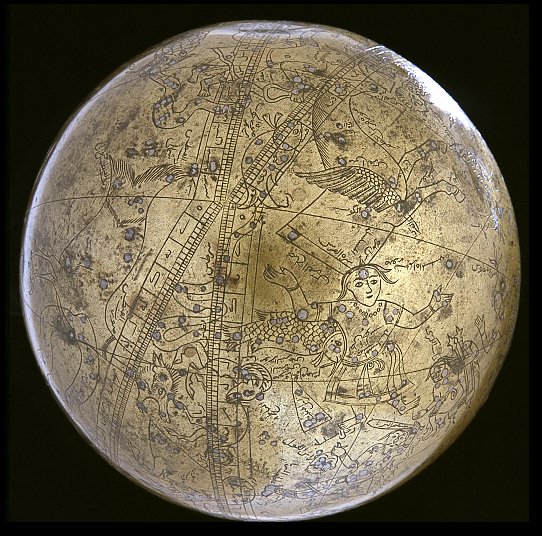 |
|
At the time
of the Pope the 'House of
the Giant' (Bet-el-geuze,
α Orionis) had been rising
with the Sun 84 days after
ºMarch 21 (80), i.e. in
ºJune 13 (164). At the time
of rongorongo the distance
from 0h to Betelgeuze had
increased
with 4 days due to the
precession, to June 17
(168). Which means
Betelgeuze came 84 days
after the Julian equinox in
March 25 (84 = 12 weeks).
168 = 84 + 84 = 24 weeks.
Hyadum II rose heliacally in
MARCH 21 (0h) and this was
64 precessional days earlier
than at the time of
rongorongo (and 60
precessional days earlier
than at the time of the
Pope). Therefore Acrux would
at that ancient time have
been at the Full Moon in day
84 (March 25) - 64 = JANUARY
20 and would have risen with
the Sun in day 20 + 183 = 203
(JULY 22 → 22 / 7 =
π). Since the time of
Hyadum II Acrux had advanced
ahead from the
π date with 64 days
(respectively with 60 days).
At the time
of Betelgeuze (when this
star had been at 0h) Acrux
(†) would have risen with
the Sun *88 (= the right
ascension position of
Betelgeuze at the time of
rongorongo) days earlier in
the year than at the time of
rongorongo. September 24
(267, heliacal Acrux) - 88 =
179 (= 80 + 99 = 84 + 95),
and this was a week after
the solstice when the Sun
'died', †. |
The first pair of niu
(*)
glyphs in the C text are at the end of
line a2 and we can therefore expect also them to
refer to the nakshatra stars at the
time of rongorongo. However, the
dates in the Gregorian calendar could
have loomed high in the forefront of the mind of
the creator of the text. And whereas the
G text (above) probably should be read
heliacally (as for an observer north of
the equator) the C text was probably
created
'upside down' - to be read by an
observer living south of the equator (on Easter
Island) - i.e. nakshatra wise according
to the
stars close to the Full Moon:
|
17 |
 |
 |
|
Ca1-24 (= 6 + 18) |
Ca1-25 |
|
- |
kiore ki
te huaga |
|
INVISIBLY CLOSE TO THE SUN
(helical dates): |
|
no star listed (207) |
τ Bootis (208.2),
BENETNASH
= η Ursae Majoris
(208.5), ν
Centauri (208.7), μ Centauri, υ
Bootis (208.8) |
|
Oct 14 |
15 (288) |
|
CLOSE TO THE FULL MOON (and
nakshatra dates): |
|
ALSEIPH
(Scimitar) = φ Persei
(24.5), τ Ceti
(24.7) |
no star listed (25) |
|
4-14 (104) |
April 15 (470 = 105 + 365) |
|
ºApril 10 (100) |
11 (*21) |
|
'March 18 (59 + 18) |
19 (78) |
|
"March 4 (45 + 18) |
5 (64) |
|
FEBR 9 (22 + 18) |
10 (41 = 406 - 365) |
|
20 = 40 - 20 = 385 - 365 |
21 (= 406 - 20) |
|
24 |
 |
 |
|
Ca2-24 (50) |
Ca2-25 (→ 50) |
|
niu
- kupega
hia mai |
tu te niu
- ku huki |
|
INVISIBLY CLOSE TO THE SUN
(helical dates): |
|
ALKALUROPS = μ Bootis
(233.1),
ED ASICH = ι Draconis
(233.2) |
NUSAKAN = β Cor. Bor.
(234.0), κ¹ Apodis (234.3), ν
Bootis (234.7), ζ Librae (234.9) |
|
Nov 9 (130 + 183) |
10 (314 = 288 + 26) |
|
CLOSE TO THE FULL MOON (and
nakshatra dates): |
|
ALGENIB PERSEI
= α Persei
(50.0), ο Tauri (50.2), ξ Tauri
(50.8)
GIENAH (γ Corvi)
|
σ
Persei (51.6) |
|
May 10 (130) |
11 |
|
ºMay
6 |
7 (127) |
|
'April 13 |
14 (104) |
|
"March 30 |
31 (90) |
|
MARCH 7 |
8 (67) |
|
46 |
47 |
Counting (hia)
should begin (mai) - as I here understand the
words of Metoro - from the 'fishing net'
(kupega). However, this place was defined
not by the first Greek lettered star ('first point') in
Perseus - which was the Scimitar (remarkably already down at the right
foot of Andromeda) - but at α (Algenib).
This was probably
where the 'weaving on the calendar loom'
should begin, 26 days after Alseiph.
... Five days of illumination, called
the 'Lighting of the Flame' (which in
the earlier reading of this miracle play
would have followed the quenching of the
fires on the dark night of the moon when
the king was ritually slain), preceded
the five days of the festival itself;
and then the solemn occasion (ad
majorem dei gloriam) commenced. The
opening rites were under the patronage
of Hathor. The king, wearing the belt
with her four faces and the tail of her
mighty bull, moved in numerious
processions, preceded by his four
standards, from one temple to the next,
presenting favors (not offerings) to the
gods.
Whereafter the priesthoods arrived in
homage before his throne, bearing the
symbols of their gods. More processions
followed, during which, the king moved
about - as Professor Frankfort states in
his account - 'like the shuttle in a
great loom' to re-create the fabric of
his domain, into which the
cosmic
powers represented by the gods, no less
than the people of the land, were to be
woven ...
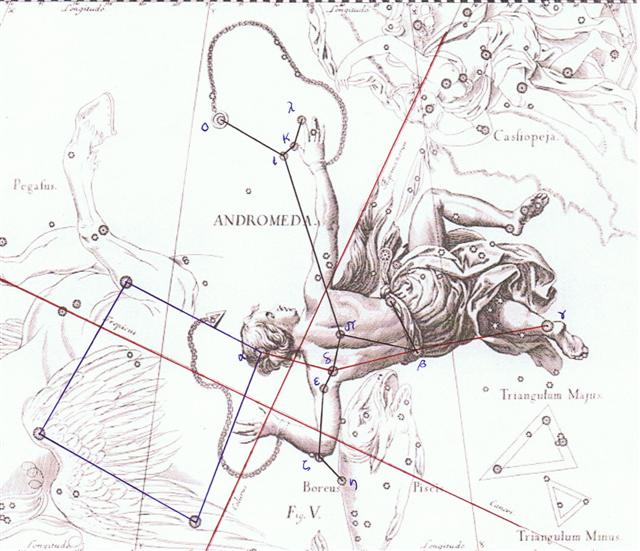
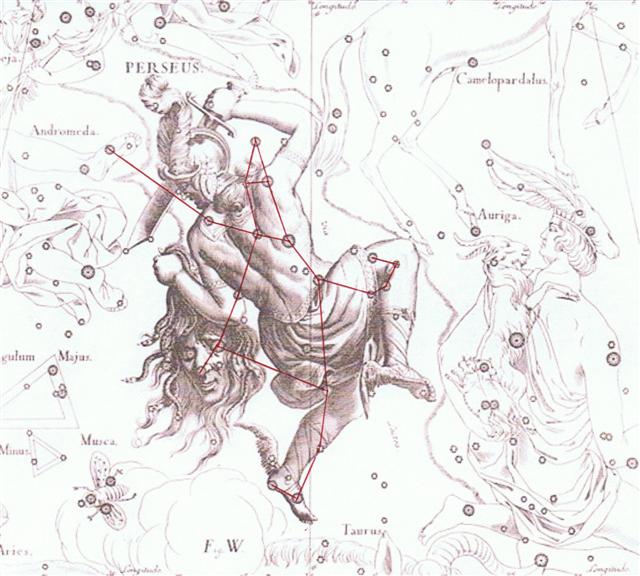
|
Kupega
He-tá i te
kupega, to weave (a
net). Hopu kupega,
those who help the motuha
o te hopu kupega in
handling the fishing nets.
Huki kupega, pole
attached to the poop from
which the fishing-net
is suspended. Mata kupega,
mesh. Te matu'a o te
kupega, part of a net
from which the weaving
started. Te puapua
kupega, the upper part
of a fishing net. Tau
kupega, rope from which
is hung the oval net used in
ature fishing.
Tuku kupega, a fishing
technique: two men drag
along the top of a fishing
net doubled up, spread out
on the bottom of a small
cove, trapping the fish into
the net. Vanaga. |
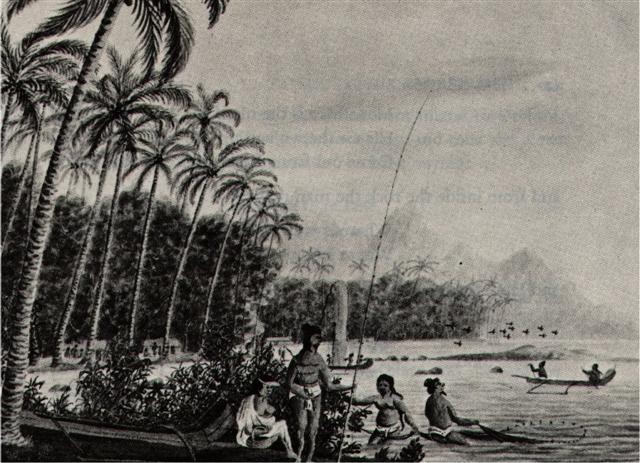
Polaris (Ana-nia)
was a place 'to fish by' and in
Roman times
Land (Aries) would here have been 'fished up' from the
depths of the sea. Coconut trees
were thriving at the border between
Land and Sea. And Polaris, which came 26
days after Sirrah, marked the end of side a
on the C tablet. 392 = 366 + 26.
As to huki this too had to do
with fishing:
|
Huki 1. Pole attached to the poop from which the
fishing-net is suspended: huki kupega. 2. Digging stick. 3. To
set vertically, to stand (vt.). 4. Huki á te mahina, said
of the new moon when both its horns have become visible. Vanaga.
1. To post up, to publish. 2. To cut the throat (uki).
Mq.: Small sticks which close up the ridge of a house. Ha.: hui,
the small uniting sticks in a thatched house. Churchill. Standing upright. Barthel. M. Spit for roasting. Te Huki, a constellation.
Makemson.
Hukihuki. 1. Colic. 2. To transpierce, a
pricking. 3. To sink to the bottom. Churchill. |
|
HUI¹, v.
Haw., to unite together, to mix, to add one to another, to assemble,
meet; s. cluster, collection of things; huihui, a bunch,
cluster; huiuna (for huiana), a seam in a garment;
la-hui, collection of people, a nation.
Sa. sui, to
dilute, to add ingredients to a thing; sui, to sew, to thread
beads; susui, to mend, repair; susuia, to fasten the
ridge-pole of a house. Tong., hui, mingle, mix, join; fufui,
a flock of birds. N. Zeal., hui, huhui, to gather, mix,
unite; ra-hui, a company; ka-hui, a herd, a flock. Tah.,
hui, a collection of persons, a company; hui-hui manu,
flock of birds; hui-tara-wa, Orion's belt. Marqu., huhui,
a bundle of taro.
Sanskr., yu, to
bind, join, mix; yuj, to join; yuga, a yoke, a pair, a
couple; yûti, mixing; yûtha, flock of birds or beasts.
Greek, ζευγνυμι,
to join, put to, yoke up, bind, fasten;
ζευγος,
a yoke of beasts, pair, couple;
ζυγον,
the yoke; ζωνη,
belt, girdle. Lat., jugum, a yoke; jugo, bind up, tie
together; jungo, bind, join, unite. Goth., juk, a yoke.
A.-Sax., geok, id. Scand., ok, id. Armen., zugel,
attach together, yoke up; zoygkh, a couple, a pair. Pers.,
yûgh, a yoke. Irish, ughaim, harness. Welsh, jow,
yoke. Lett., jûgs, yoke. Anc. Slav., jgo, yoke. Bohem.,
gho, id. Lith., jungas, id.
A singular coincidence
of application, if it has no nearer connection, by the Polynesian and
the Latin of this word to similar purposes, occurs in the huhui
and hui-tarawa of the former and jugulæ of the latter. In
Hawaiian huhui designates a constellation generally, but
especially that of the Pleiades; in Tahitian hui-tarawa, lit. the
transverse or horizontal cluster, designates the stars generally called
Orion's belt, and in Latin jugulæ represents the very same stars
in the constellation Orion.
HUI²,
v. Haw., to ache, be in pain; s. bodily pain; niho-hui,
the toothache; hui, huihui, cold, chilly, as morning air
or cold water; hukeki, hukiki, cold, shivering on account
of wet. N. Zeal., huka, cold. Tah., hui, hui-hui,
to throb as an artery, twitchings in the flesh.
Sanskr., çuch¹,
to be afflicted, grieve; çuch², to be wet, fetid; çuch,
s., sorrow, grief; quære suçîma, cold? To this Sanskr. çuch
Benfey refers the Goth. hiufau, to mourn, lament, and the O.
H. Germ. huvo, an owl. (Fornander) |
If a Tree was
perceived to rise up at the horizon
in the east, then it ought to have come up
at the time when the 'Land' of
the 'summer year' was arriving.
... In north Asia the common mode of
reckoning is in half-year, which are
not to be regarded as such but form
each one separately the highest unit
of time: our informants term them
'winter year' and 'summer year'.
Among the Tunguses the former
comprises 6½ months, the latter 5,
but the year is said to have 13
months; in Kamchatka each contains
six months, the winter year
beginning in November, the summer
year in May; the Gilyaks on the
other hand give five months to
summer and seven to winter. The
Yeneseisk Ostiaks reckon and name
only the seven winter months, and
not the summer months. This mode of
reckoning seems to be a peculiarity
of the far north: the Icelanders
reckoned in misseri,
half-years, not in whole years, and
the rune-staves divide the year into
a summer and a winter half,
beginning on April 14 and October 14
respectively. But in Germany too,
when it was desired to denote the
whole year, the combined phrase
'winter and summer' was employed, or
else equivalent concrete expressions
such as 'in bareness and in leaf',
'in straw and in grass'
...
This Land could be
'fished up' (the head of the 'Fish'
arriving first and its tail later)
and the Tree surely had to stand on
Land.
...
Boastful Maui behaved as if it were
a very ordinary sort of fish-hook,
and flashed it carelessly. Then he
asked his brothers for some bait.
But they were sulking, and had no
wish to help him. They said he could
not have any of their bait. So
Maui atamai doubled his fist and
struck his nose a blow, and smeared
the hook with blood, and threw it
overboard.
'Be quiet now,' he told his
brothers. 'If you hear me talking to
myself don't say a word, or you will
make my line break.' And as he paid
out the line he intoned this
karakia, that calls on the
north-east and south-east winds:
Blow gently, whakarua, / blow
gently, mawake, / my line let
it pull straight, / my line let it
pull strong. / My line it is pulled,
/ it has caught, / it has come.
/
The land is gained, / the land is in
the hand, / the land long waited
for, / the boasting of Maui, / his
great land / for which he went to
sea, / his boasting, it is caught.
A spell for the drawing up of the
world.
The brothers had no idea what Maui
was up to now, as he paid out his
line. Down, down it sank, and when
it was at the bottom Maui lifted it
slightly, and it caught on something
which at once pulled very hard.
Maui pulled also, and hauled in a
little of his line. The canoe heeled
over, and was shipping water fast.
'Let it go!' cried the frightened
brothers, but Maui answered with the
words that are now a proverb: 'What
Maui has got in his hand he cannot
throw away.'
'Let go?' he cried. 'What did I come
for but to catch fish?' And he went
on hauling in his line, the canoe
kept taking water, and his brothers
kept bailing frantically, but Maui
would not let go.
Now Maui's hook had caught in the
barge-boards of the house of
Tonganui, who lived at the bottom of
that part of the sea and whose name
means Great South; for it was as far
to the south that the brothers had
paddled from their home. And Maui
knew what it was that he had caught,
and while he hauled at his line he
was chanting the spell that goes:
O Tonganui / why do you hold so
stubbornly there below?
/
The power of Muri's jawbone is at
work on you, / you are coming, / you
are caught now, / you are coming up,
/ appear, appear.
/
Shake yourself, / grandson of
Tangaroa the little
...
.jpg)
|

















.jpg)